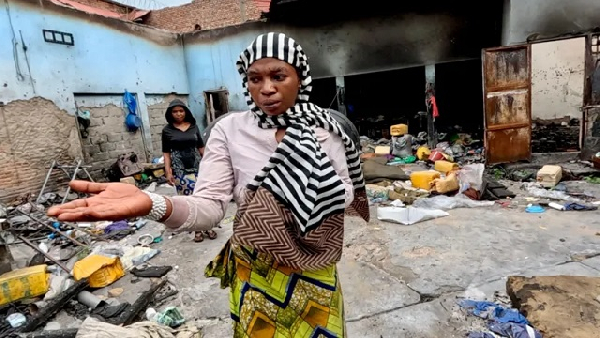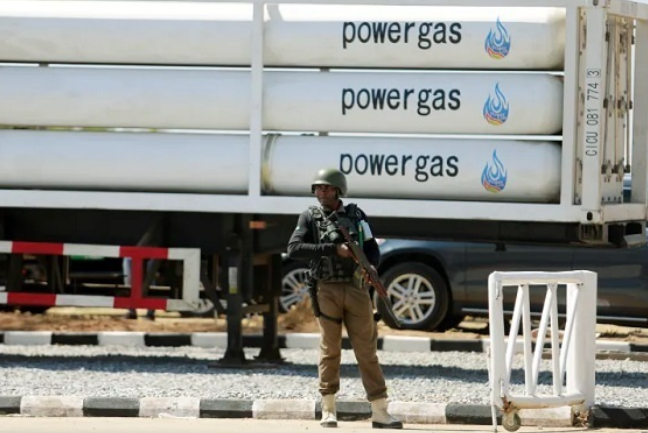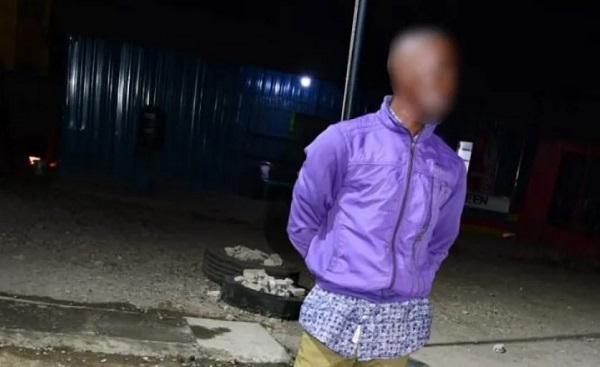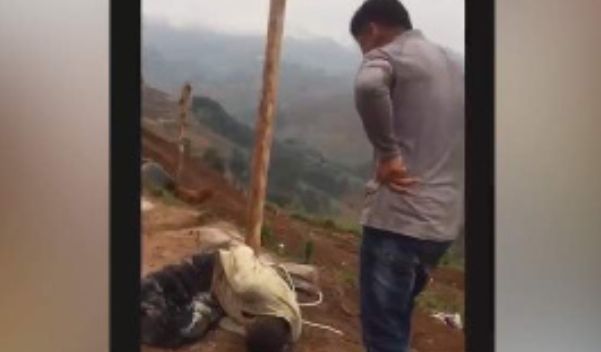‘They took all the women here’: Rape survivors recall horror of DR Congo jailbreak

“He told me that if I tried to escape, he would kill me.”
Pascaline, 22, recalls the words of her rapist at a prison in Goma, the largest city in eastern Democratic Republic of Congo, in the early hours of 27 January.
“I was forced to let it happen instead of losing my life,” Pascaline tells the BBC.
He was the second man to rape her at Munzenze prison. The first attack was so violent that she passed out.
Her attackers came over the wall from the men’s block right next door called “Safina”, she says.
“We heard a noise as they jumped on the water tanks. There were so many of them, and we were so scared. The ones who were unlucky were raped. The ones who were lucky got out without being raped.”
Chaos was spreading through the jail, and the surrounding city. Rwandan-backed M23 rebels were closing in on Goma, after a rapid advance through the region.
Most of the prison guards and the city authorities had already fled. Shooting could be heard outside the jail.
Hours later, inside the compound, there was a fire – apparently set by male prisoners as they tried to escape.
By morning, about 4,000 male inmates had broken out. But few of the women managed to get away. A total of 132 female prisoners and at least 25 children burned to death, according to two sources.
A UN official told the BBC that “at least 153 women had perished”, quoting “reliable sources in the prison”.
A month on, Pascaline has come back to the charred shell of the prison complex, where an empty watch tower still stands.
She wants to tell her story and is willing to be identified. She is also a voice for the dead.
She walks through the main yard of the women’s section, glancing at the scorched walls, scattered cooking pots and piles of clothing. Her hand comes to her mouth in wordless horror, and she shakes her head.
“At one point I didn’t know what was happening any more,” she says. “It was after seeing the others die that I began to pull myself together, I would say that it was God who wanted me to be saved.”
Pascaline, an onion seller, wound up behind bars here when her employer accused her of theft.
Nadine, 22, has also come back to the prison for the first time. In her mind, she cannot escape it.
“When I sleep at night, everything I’ve seen here comes back to me. I see the dead again – as many dead bodies as I saw here until I got out. Instead of opening the door, they let us die like animals here.”
Nadine says she was also raped by two men.
“They came with alcohol,” she tells the BBC. “They wanted to drug people. They took me by force. They took all the women here.”
The BBC cannot verify how many women were raped that night, out of a total of 167 who, sources say, were being held.
Nadine is furious at the authorities – for locking her up in the first place over an unpaid debt, she says, and then failing to let her out.
“I don’t think that justice can exist in Congo,” she says. “I condemn the way the government is running things.”
The DR Congo government – more than 1,500km (1,000 miles) away in the capital Kinshasa – is no longer running anything in Goma. The rebels are in full control and are continuing to advance in the east.
Among the piles of ash that carpet the prison floor after the fire, there is a tiny pink sandal, which is burnt on one side. Some shiny buttons glitter in the dirt beside it, perhaps from children’s clothing.
Women prisoners were allowed to keep one of their children in the jail with them. Only two children out of 28 survived the blaze in the prison, according to a source. Child prisoners – held in a separate block – were released earlier in the day.
It was not just the smoke and the flames that killed the most vulnerable, according to a detailed account from another survivor aged 38, who does not want to be identified. We are calling her Florence.
She says “children started to die” when tear gas was fired into the women’s section.
“The prison was surrounded by soldiers and police who, instead of coming to put out the fire, were firing bullets and throwing tear gas at us,” Florence says.
“When the tear gas was dropped on us, the fire became intense. Our eyes tingled as if chilli had been poured into them. There was almost no way to breathe,” she adds.
The fire and the rapes are shrouded in confusion, with all sides eager to blame someone else.
Human rights groups say rape is widely used as a weapon of war in DR Congo by both the M23 rebels and government forces.
However, in this case, Florence says it was fellow inmates.
“You could see they were prisoners. Some came without shoes. When they climbed onto the roof of the women’s prison, they were calling the names of those they knew. And none of the attackers were armed or in uniform.”
Florence says she heard “bullets crackling” outside the prison from 23:00 onwards, and escaping prisoners were being killed by police outside.
“If a prisoner got out, they shot him. When the bullets were flying, I was on my knees begging God to deliver us from this bad situation.”
Some of the prisoners who broke into the women’s section were looking for a safer escape route, she says.
They breached one of the walls facing the outside – a place where police were not normally stationed. But soon that gap was filled – by the fire.
Florence first saw the flames at about 04:00. Then hour after hour, she rushed from body to body.
“People were dying in front of our eyes. I couldn’t count them. We tried to revive them by giving them water. Some women were suffocated by the fire, as well as the gas. Some died of heart attacks,” Florence tells the BBC.
She too blames the Congolese authorities for the loss of so many lives.
“The state should have opened the doors when it saw the fire or come and put it out.”
The BBC has contacted the government in Kinshasa asking for a response to what the survivors have told us but we have not yet received one.
Florence says the women’s prison was finally opened at 11:00 – she does not know by who – and she emerged with 18 other survivors. They were offered no help.
“Even the policemen we found on the road, did not ask for news of the prisoners, or ask if anyone had been hurt, or how we were,” she says.
By then rebel fighters were in parts of the city, having entered at around 08:00. Goma was falling.
The women did not seem to matter – in or out of prison.
In a tent in the grounds of Goma’s hospital, we meet another survivor, Sifa, 25, who was pulled from the flames by a friend.
She lies on her left side – any other position is too painful. Her right arm is heavily bandaged, and there are burn marks on her arm and her face. She also has burns on her back. When her dressings are changed the nurses have to give her morphine.
But her agony is more than physical.
Her two-year-old daughter Esther died in the prison.
“I had Esther on my back. When we wanted to escape, something fell on her. A bomb? I don’t know what. She died on the spot,” Sifa tells the BBC.
She adds that Esther was just starting to walk and was “without sin”. Sometimes she would play with the other children in the prison, but mostly she was by her mother’s side.
How did Sifa, a peanut seller, wind up behind bars in a teeming prison with her daughter?
She was accused of involvement in a robbery, which she denies. She says she was jailed without being convicted. Local sources say that is a common occurrence.
The full story of what happened in Munzenze Prison may never be known. It seems those in power are in no rush to find out.
Sifa and the other survivors we spoke to told us that no-one had contacted them to take their testimony about the horrors of 27 January – not the rebels in control of Goma now, nor the government in Kinshasa who used to run the prison.
“No-one will follow [this case],” Sifa says. “No-one will be pursued. It’s already over.”
Source: bbc.com





